Abstract
In 1989 the National Cancer Institute funded the second round of Data-Based Intervention Research (DBIR) cooperative agreements with state health agencies to implement a four-phase cancer prevention and control planning model that would establish ongoing cancer prevention and control programs. Activities included identifying and analyzing relevant data to develop a state cancer control plan. The authors reviewed the data analysis and planning activities of five DBIR projects to understand: how states use different types of available data to make public health planning decisions, in what ways available data were sufficient or insufficient for this planning, and perceived costs and benefits of a data-based planning approach. Many of the sources of and ways in which health statistics and behavioral data were used were consistent across states. Sources and use of data on the availability and utilization of health services and on cancer control policies were less consistent. Data were most useful in making decisions to address specific cancers, to target populations or regions, to identify general barriers, and to influence policy makers and the public. Data were less influential in identifying specific barriers within target populations and determining what proven intervention components should be implemented and how. The process of pulling this information together and involving working groups and coalitions was considered very beneficial in establishing the credibility of the state health agency in addressing the state's cancer problem. This process relied on a national infrastructure that provided financial resources, sources of data, and research results.
Full text
PDF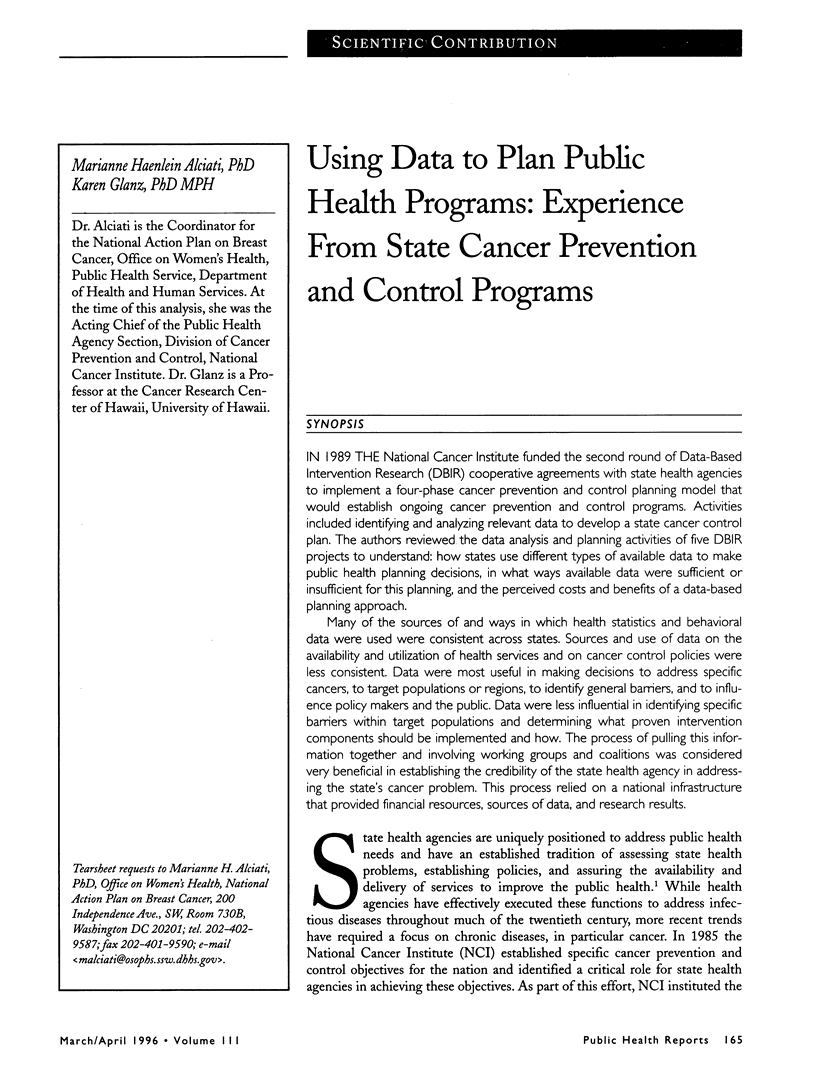
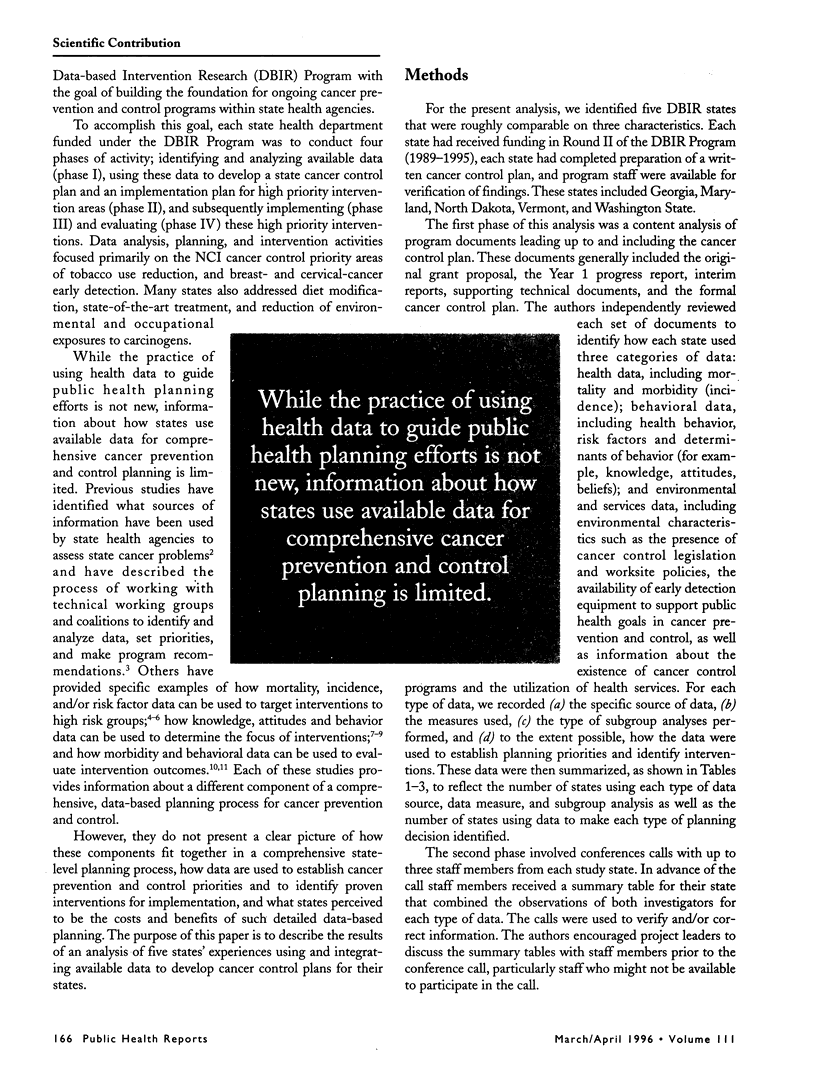
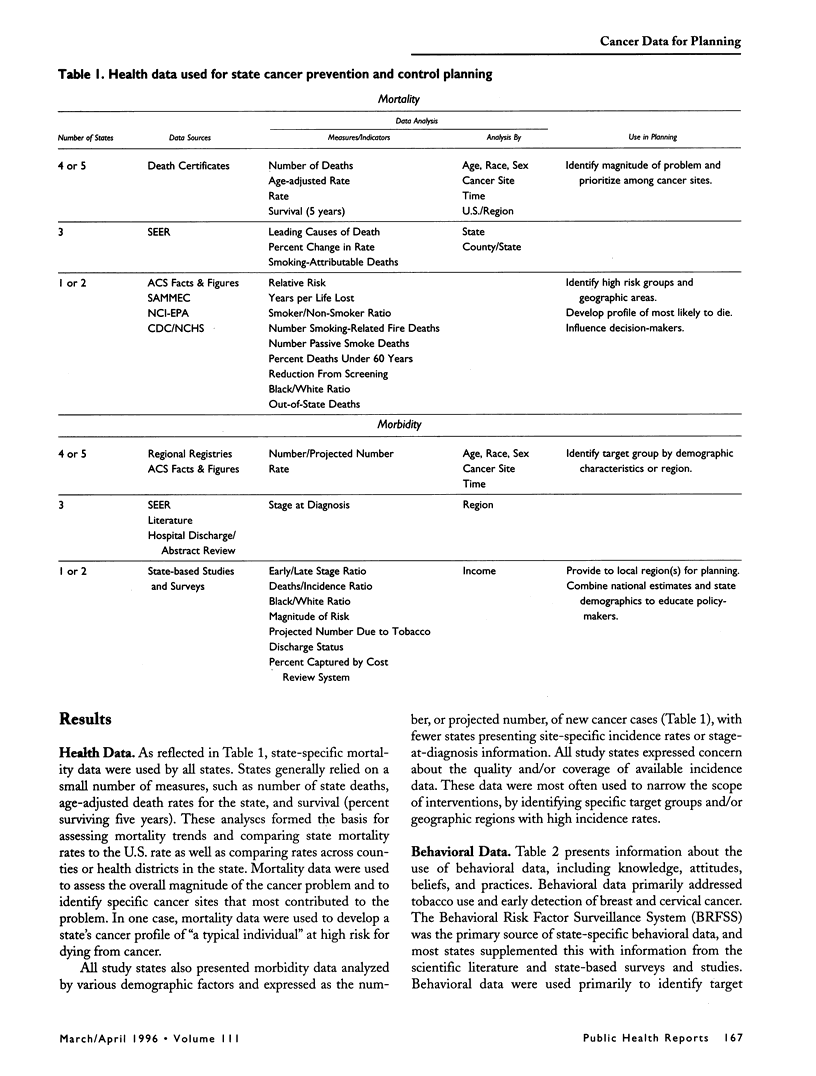
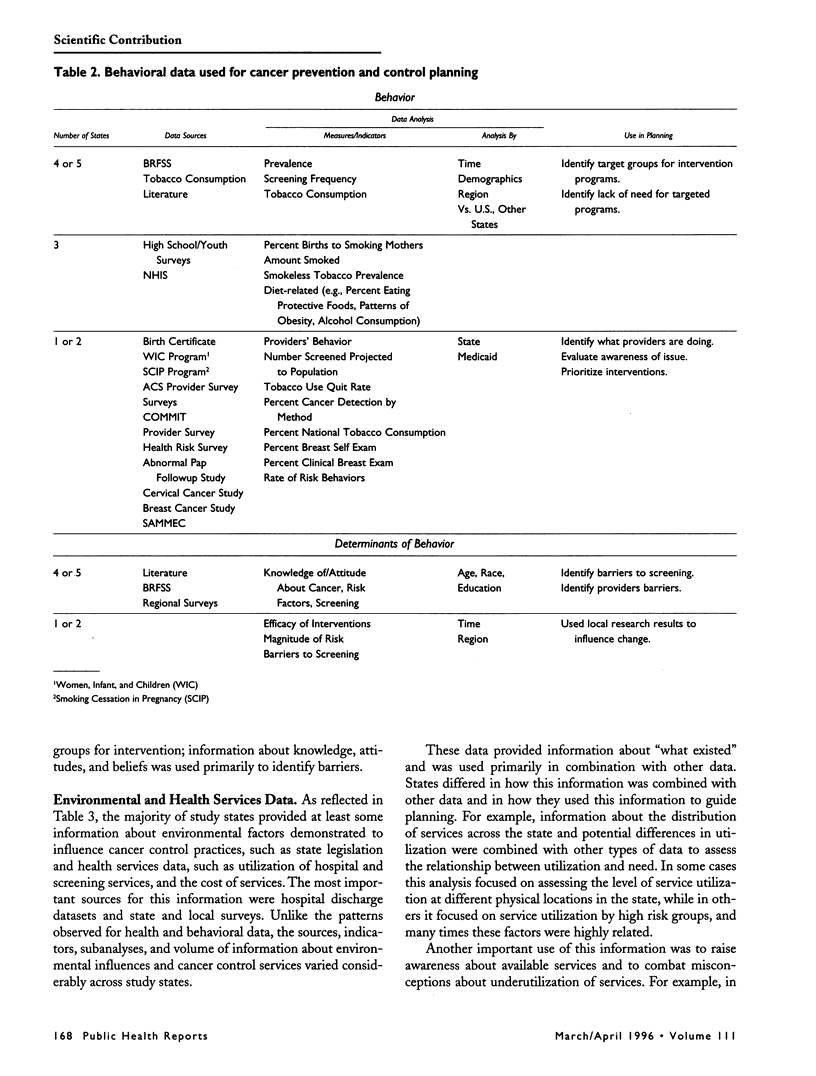
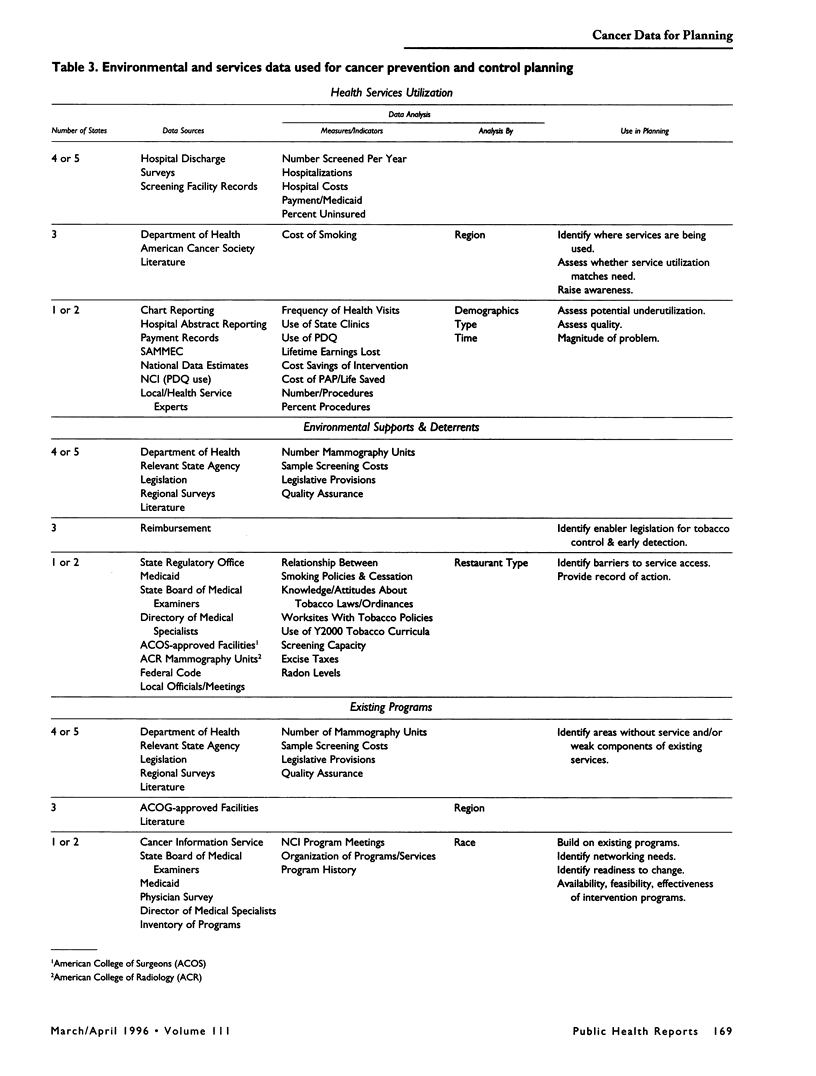
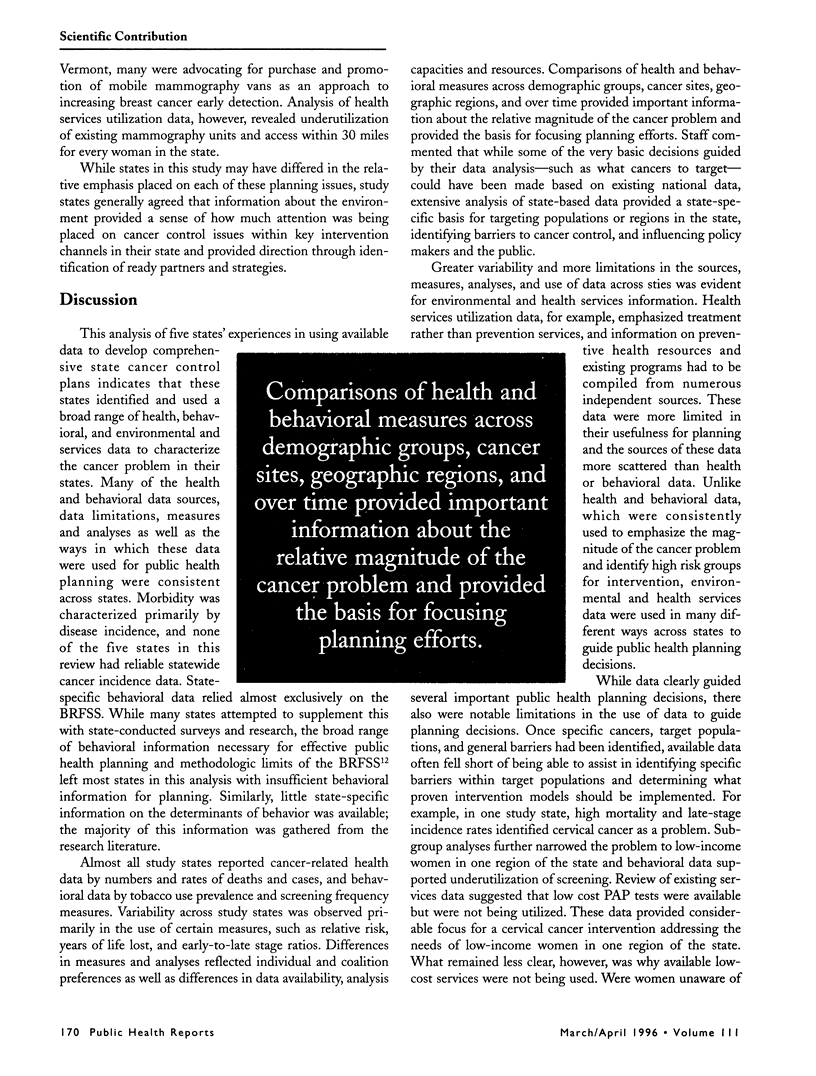
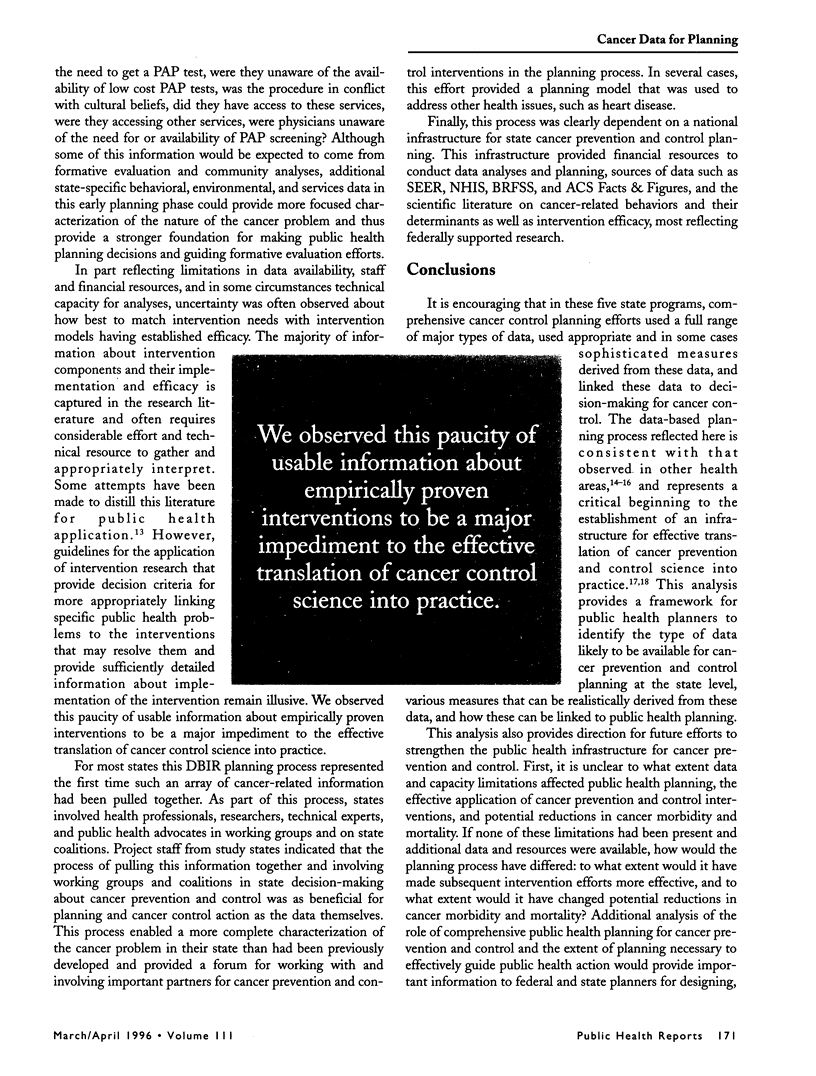
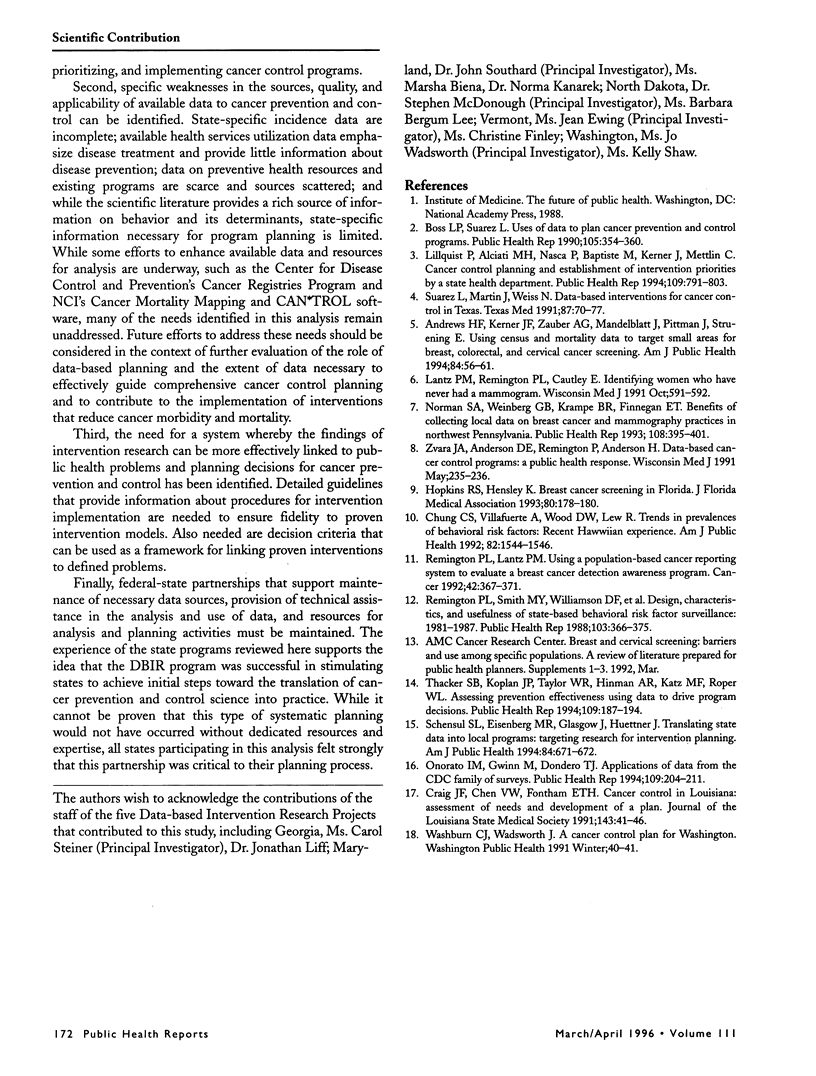
Selected References
These references are in PubMed. This may not be the complete list of references from this article.
- Andrews H. F., Kerner J. F., Zauber A. G., Mandelblatt J., Pittman J., Struening E. Using census and mortality data to target small areas for breast, colorectal, and cervical cancer screening. Am J Public Health. 1994 Jan;84(1):56–61. doi: 10.2105/ajph.84.1.56. [DOI] [PMC free article] [PubMed] [Google Scholar]
- Boss L. P., Suarez L. Uses of data to plan cancer prevention and control programs. Public Health Rep. 1990 Jul-Aug;105(4):354–360. [PMC free article] [PubMed] [Google Scholar]
- Chung C. S., Villafuerte A., Wood D. W., Lew R. Trends in prevalences of behavioral risk factors: recent Hawaiian experience. Am J Public Health. 1992 Nov;82(11):1544–1546. doi: 10.2105/ajph.82.11.1544. [DOI] [PMC free article] [PubMed] [Google Scholar]
- Craig J. F., Chen V. W., Fontham E. T. Cancer control in Louisiana: assessment of needs and development of a plan. J La State Med Soc. 1991 Apr;143(4):41–46. [PubMed] [Google Scholar]
- Hopkins R. S., Hensley K. Breast cancer screening in Florida. Opportunities for prevention. J Fla Med Assoc. 1993 Mar;80(3):178–180. [PubMed] [Google Scholar]
- Lantz P. M., Remington P. L., Cautley E. Identifying women who have never had a mammogram. Wis Med J. 1991 Oct;90(10):591–592. [PubMed] [Google Scholar]
- Lillquist P. P., Alciati M. H., Baptiste M. S., Nasca P. C., Kerner J. F., Mettlin C. Cancer control planning and establishment of priorities for intervention by a state health department. Public Health Rep. 1994 Nov-Dec;109(6):791–803. [PMC free article] [PubMed] [Google Scholar]
- Norman S. A., Weinberg G. B., Krampe B. R., Finnegan E. T. Benefits of collecting local data on breast cancer and mammography practices in northwestern Pennsylvania. Public Health Rep. 1993 May-Jun;108(3):395–401. [PMC free article] [PubMed] [Google Scholar]
- Onorato I. M., Gwinn M., Dondero T. J., Jr Applications of data from the CDC Family of Surveys. Public Health Rep. 1994 Mar-Apr;109(2):204–211. [PMC free article] [PubMed] [Google Scholar]
- Remington P. L., Lantz P. M. Using a population-based cancer reporting system to evaluate a breast cancer detection and awareness program. CA Cancer J Clin. 1992 Nov-Dec;42(6):367–371. doi: 10.3322/canjclin.42.6.367. [DOI] [PubMed] [Google Scholar]
- Remington P. L., Smith M. Y., Williamson D. F., Anda R. F., Gentry E. M., Hogelin G. C. Design, characteristics, and usefulness of state-based behavioral risk factor surveillance: 1981-87. Public Health Rep. 1988 Jul-Aug;103(4):366–375. [PMC free article] [PubMed] [Google Scholar]
- Schensul S. L., Eisenberg M. R., Glasgow J., Huettner J. Translating state data into local programs: targeted research for intervention planning (TRIP) Am J Public Health. 1994 Apr;84(4):671–672. doi: 10.2105/ajph.84.4.671. [DOI] [PMC free article] [PubMed] [Google Scholar]
- Suarez L., Martin J., Weiss N. Data-based interventions for cancer control in Texas. Tex Med. 1991 Aug;87(8):70–77. [PubMed] [Google Scholar]
- Thacker S. B., Koplan J. P., Taylor W. R., Hinman A. R., Katz M. F., Roper W. L. Assessing prevention effectiveness using data to drive program decisions. Public Health Rep. 1994 Mar-Apr;109(2):187–194. [PMC free article] [PubMed] [Google Scholar]
- Zvara J. A., Anderson D. E., Remington P. L., Anderson H. Data-based cancer control programs: a public health response. Wis Med J. 1991 May;90(5):235–237. [PubMed] [Google Scholar]


